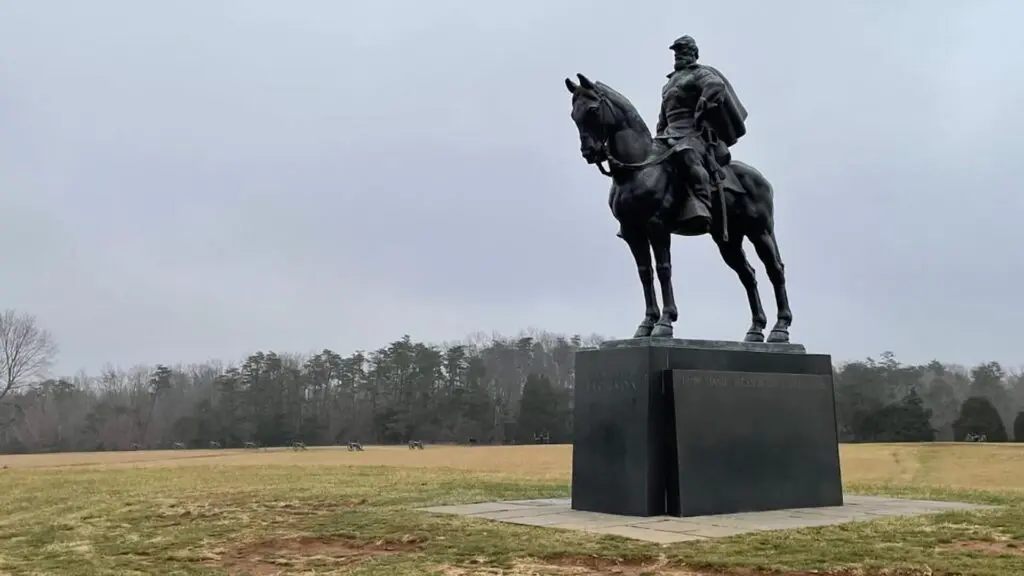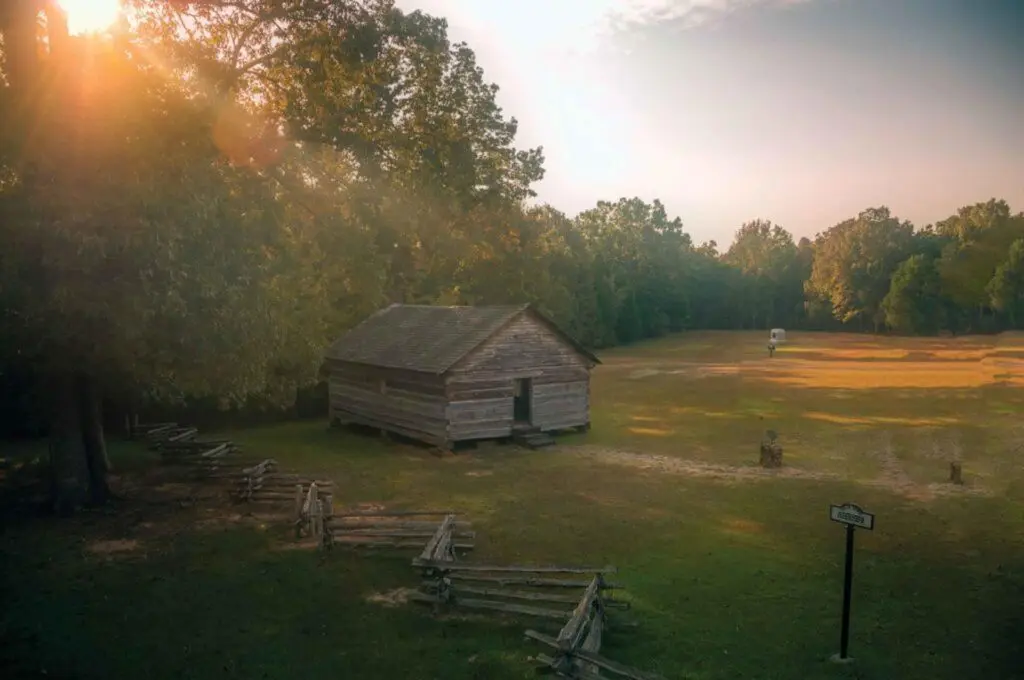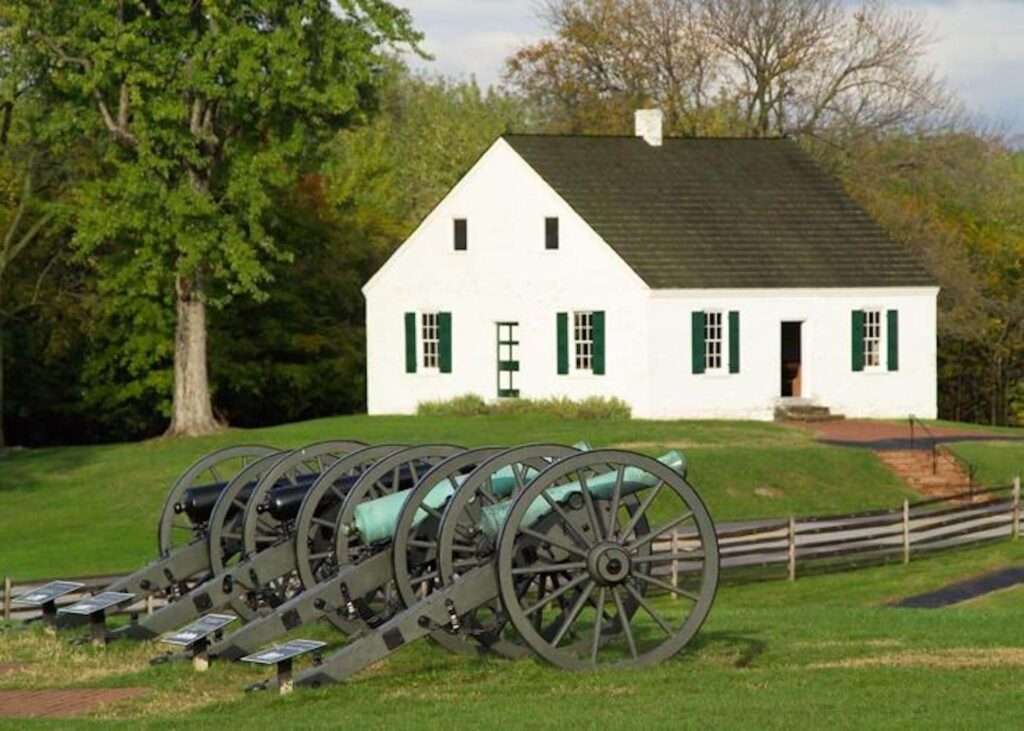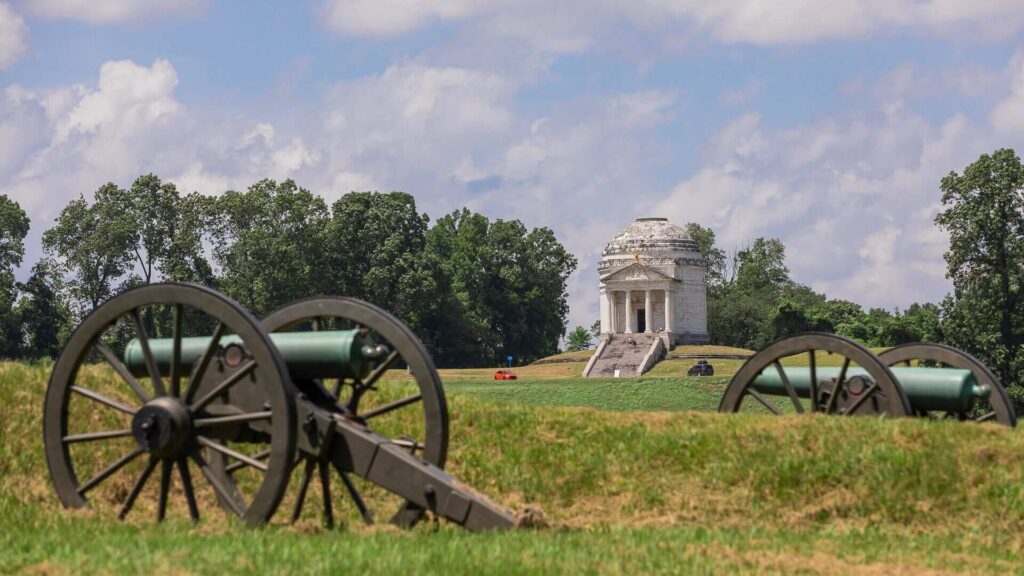The battles of the American Civil War not only determined the fate of the nation but also left a lasting imprint on the country’s geography and collective memories of many communities. Today, our nation’s Civil War sites provide a special window into the events of the war, offering us the chance to contemplate deeply the tragedy of the conflict and its legacy.
In this blog, we will journey through ten significant Civil War sites. From the rolling hills of Gettysburg, where the Union victory marked a turning point in the war, to the dense woods of the Wilderness Battlefield, where brutal combat shattered the myth of the quick and easy war, each site has its own story to tell. You’ll also discover the solemn grounds of Antietam, the bloodiest single-day battle in American history, and Appomattox Court House, where General Robert E. Lee surrendered, signaling the end of the conflict.
Join us as we explore landscapes, memorials, and museums that bring Civil War history to life. And while you are with us, please be sure to explore our own Private Civil War Battlefield Tours in Virginia.

1. Fort Sumter, Charleston, South Carolina
Fort Sumter is a coastal artillery fortification built to defend Charleston harbor in South Carolina. Located in the South, President Lincoln would hold onto the fort as a defiant protest to the South for seceding.
The opening shots of the Civil War were fired on April 12, 1861, when the Confederates bombarded the Union garrison. The fort would surrender the next day and the Civil War was underway.
The National Park manages the site today. One can take a boat to visit the fort. Walk the bastion walls and see impressive heavy coastal artillery cannons.

2. First Manassas, Virginia
Also known as First Bull Run, this battlefield is in Northern Virginia 25 miles away from Washington. On July 21, 1861, the first major land battle of the Civil War erupted between amateur armies. Confederate General Thomas J. Jackson made a determined stand and earned the nickname “Stonewall” Jackson. At the end of the day, the South emerged victorious and both sides realized the Civil War would not be a short affair.
Today the National Park Service manages the site where they have a visitor center with film on Henry Hill. Notable historic structures include the Henry and Stone House. (Read our overview of the Battle of First Manassas to learn more.)

3. Shiloh, Tennessee
The Battle of Shiloh occurred on April 6-7, 1862 in Middle Tennessee. It was named after a small church which means “Place of peace”. The Confederates surprised the Federals with a dawn attack. Brutal fighting occurred at the “Hornet’s Nest”.
On the second day, Union General Ulysses S. Grant launched a coordinated attack with reinforcements and snatched victory from the jaws of defeat. Shiloh was the bloodiest battle up until that point with more casualties than all previous American wars combined.
Today the battlefield is one of the best preserved and marked. An excellent National Park visitor center is on site along with one of the most impressive National Cemeteries.

4. Antietam, Maryland
On September 17, 1862, the North would blunt Confederate General Robert E. Lee’s first invasion of the North outside of the town of Sharpsburg, Md. At the end of the day, it would be the single bloodiest day in U.S. history. Afterward, President Abraham Lincoln would issue the preliminary Emancipation Proclamation whereby all enslaved people in Confederate-held states would be free.
Today the Corn Field, Bloody Lane, and the Burnside Bridge are popular sites to visit along with the National Park visitor center.

5. Chancellorsville, Virginia
Located in Central Virginia west of Fredericksburg, May 1-3, 1863 would be one of Confederate General Robert E. Lee’s greatest victories.
After a successful flank attack on the second day, southern general “Stonewall” Jackson was mortally wounded. The third day would be the bloodiest morning in U.S. history and inspire the novel “The Red Badge of Courage”.
The National Park visitor center located at the Jackson wounding site interprets three battles: Chancellorsville, the Wilderness, and Spotsylvania Court House.

6. Gettysburg, Pennsylvania
Fought July 1-3, 1863 Robert E. Lee’s second invasion of the North would become one of the best-known battles of the Civil War.
The last day of battle would end with a futile Confederate attack known as Pickett’s Charge, ending in an important Union victory. Afterward, President Lincoln made the Gettysburg Address, one of the most famous speeches in American History.
Impressive monuments dot the landscape marking units’ positions. Along with the colossal National Park Multiple visitor centers, various museums, and attractions can be found in town.

7. Vicksburg, Mississippi
Between 18 May and 4 July 1863 witnessed a 47-day siege at the last port town on the Mississippi River. The fortified city with over 170 cannons was called “The Gibraltar of the South”.
General Ulysses S. Grant carried out an effective campaign that would split the Confederacy in half after the city surrendered on the 4th of July.
Today the national military park features original earthworks as well as 144 emplaced cannons. The U.S.S. Cairo, a Union gunboat that was raised, is on display at the museum.

8. The Wilderness, Virginia
Located in Central Virginia west of Fredericksburg, May 5-6, 1864 would mark the beginning of the end of the Confederacy with the start of General Ulysses S. Grant’s Overland Campaign.
Lee and Grant’s first battle would witness rare fighting in a dense forest region where wildfires will be a new hell on the battlefield. In an inconclusive battle, Gen. Grant disengages and moves south closer to Richmond saying, “There will be no turning back!”
Today, Ellwood Manor, a plantation home used as Union General Warren’s headquarters, serves as the primary visitor center operated by the Friends of the Wilderness Battlefield.

9. Richmond, VA Civil War Sites
Virginia was one of the South’s largest industrial states with an enormous population to fill the ranks. After secession, they used Richmond as the Confederate States of America’s capital. The city became the center of politics, wartime manufacturing, prisoner-of-war camps, hospitals, and cemeteries.
The Richmond area battlefields witnessed the rise and fall of the Confederacy from the Seven Days’ Battles to Cold Harbor. After the siege of Petersburg, on April 3, 1865, the Confederate capital fell into Union hands.
Today, the White House of the Confederacy, the Chimborazo Hospital site, and the American Civil War Museum at Tredegar are some of the museums to see.

10. Appomattox Court House, Virginia
Days after the fall of the Confederate capital, General Grant would catch up with Lee 90 miles west of Richmond. Unable to retreat and out of options, Robert E. Lee surrendered in the parlor of the McLean House in the small village of Appomattox Court House on April 9, 1865.
Today, the conclusion of the Civil War can be felt by visiting the restored village and the surrender site. In the National Park visitor center, one can see the pencil that Lee used to sign the surrender.
Here, we bring a close to our list of just some of the top American Civil War Sites. If you are ready to explore the battlefield for yourself? Browse our full selection of American Civil War Battlefield Tours or contact us if you have any questions about our tours or services.


